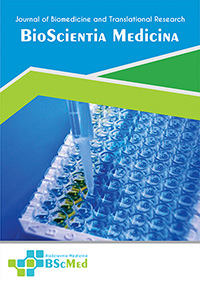Main Article Content
Abstract
Background: Completion thyroidectomy (CT) for differentiated thyroid carcinoma (DTC) is a high-risk procedure, frequently performed following an oncologically incomplete primary operation. This study characterizes the preoperative diagnostic assessment deficiencies in a cohort of DTC patients referred to a tertiary center for re-operation and identifies factors associated with residual disease.
Methods: We conducted a retrospective, single-center analysis of all patients who underwent CT for DTC at Hasan Sadikin General Hospital, Indonesia, over a 30-month period (January 1st, 2023, to June 30th, 2025). Data on preoperative assessments at the referring hospitals (ultrasonography (US) quality, fine-needle aspiration biopsy (FNAB), hormonal tests), primary surgical indications, and clinicopathological outcomes from both operations were extracted and analyzed using descriptive and bivariate statistics (Fisher's Exact Test).
Results: A total of 27 patients met the inclusion criteria. Analysis of their initial workup revealed significant omissions: 14/27 (51.9%) lacked FNAB, and 5/27 (18.5%) lacked hormonal testing. While 24/27 (88.9%) underwent a primary US, only 20.8% of these reports (5/24) were ATA-compliant staging examinations. Only 5/27 patients (18.5%) received a complete trimodal assessment. Upon re-operation, 10/27 (37.0%) had residual carcinoma. This finding was significantly associated with the omission of primary FNAB (57.1% vs. 15.4%, p = 0.027).
Conclusion: In this cohort of referred patients, incomplete preoperative assessment was nearly universal and strongly associated with adverse pathological findings. These data highlight the urgent need for standardized, evidence-based preoperative protocols and strengthened referral systems to ensure patients receive the correct primary operation.
Keywords
Article Details
As our aim is to disseminate original research article, hence the publishing right is a necessary one. The publishing right is needed in order to reach the agreement between the author and publisher. As the journal is fully open access, the authors will sign an exclusive license agreement.
The authors have the right to:
- Share their article in the same ways permitted to third parties under the relevant user license.
- Retain copyright, patent, trademark and other intellectual property rights including research data.
- Proper attribution and credit for the published work.
For the open access article, the publisher is granted to the following right.
- The non-exclusive right to publish the article and grant right to others.
- For the published article, the publisher applied for the Creative Commons Attribution-NonCommercial-ShareAlike 4.0 International License.





